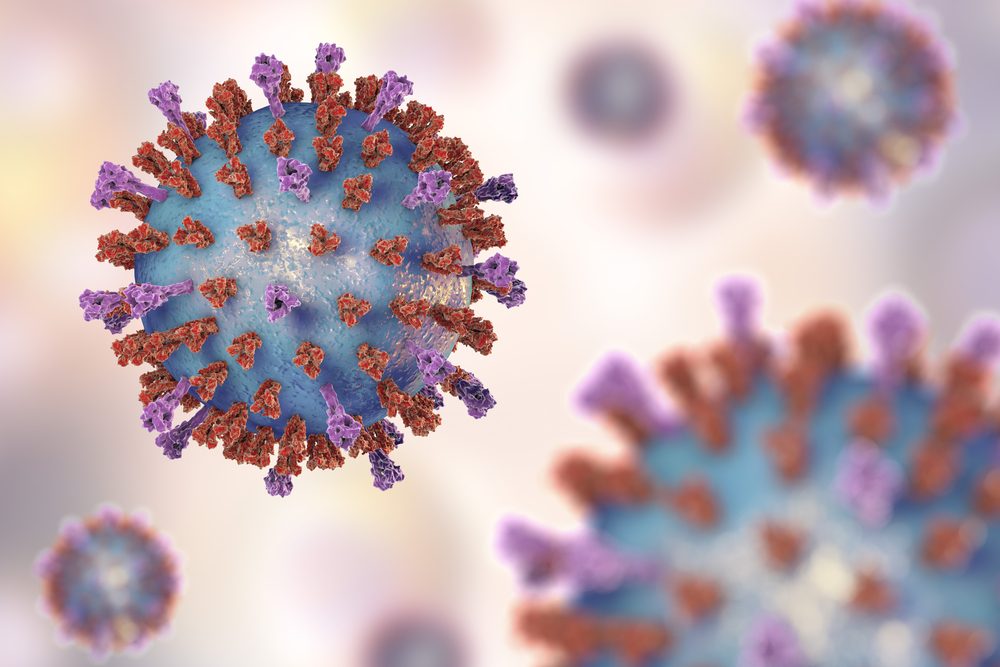Higher Risk of Blood Clots With COVID-19 Infection Seen in Study
Written by |

People with Sjögren’s syndrome and other systemic autoimmune rheumatic diseases (SARDs) may be at a greater risk of severe complications from COVID-19 than people without these disorders, a study reports.
Specifically, SARDs patients are more likely to develop venous thromboembolism (VTE), or blood clots in the veins, after being infected with SARS-CoV-2. Study investigators recommend that “SARD patients with COVID-19 should be closely monitored for thrombotic complications.”
The study, “COVID‐19 Outcomes in Patients with Systemic Autoimmune Rheumatic Diseases (SARDs) Compared to the General Population: A US Multi‐Center Comparative Cohort Study,” was published in the journal Arthritis and Rheumatology.
SARDs are marked by the immune system attacking connective tissues. The underlying immune defects and the use of immunosuppressive medications to control these disorders may put patients at greater risk for more severe complications of COVID-19 and poorer outcomes.
While early case reports suggested that SARDs patients generally have mild COVID-19 infections, larger studies have since reported an up to three times greater likelihood of mechanical ventilation given to people with underlying rheumatic conditions.
Using an electronic health record network, researchers at Massachusetts General Hospital in Boston investigated COVID-19 outcomes in SARDs patients, compared with COVID patients without underlying rheumatic conditions serving as controls. The electronic health data set includes 41 U.S. healthcare organizations serving more than 50 million people.
The study assessed 30-day COVID-19 outcomes in these two patient groups. They compared the use of healthcare resources, including hospitalization, intensive care unit (ICU) admission, mechanical ventilation, acute renal failure, stroke, VTE, and death.
A total of 2,379 SARDs patients and 142,750 control-group patients with COVID-19 were included in the analysis. Sjögren’s syndrome was among the most common SARD, reported in 317 (13%) study participants. Other common SARDs included rheumatoid arthritis (50%), systemic lupus erythematosus (22%), and psoriatic arthritis (8%).
SARDs patients were generally older than controls (mean age, 58 vs. 47), and a larger proportion were female (79% vs. 54%). Comorbidities, or co-occurring disorders like high blood pressure, heart disease, asthma, and diabetes, were also more common in the SARDs group, as were prior hospitalizations.
In a first statistical model, researchers matched 2,379 SARD patients and 2,379 controls by age, sex, race and ethnicity, and body mass index (BMI).
Here, SARD patients had a significantly higher risk of hospitalization (by 14%), ICU admission (32%), acute renal failure (81%) risk, and VTE (74%), compared with controls. But they were not found to have an elevated risk of mechanical ventilation or death.
Since differences were noted between patient and control groups regarding comorbidities and prior healthcare resource use, a second model was created to include these two variables.
This extended model found that SARD patients were no longer more likely to be hospitalized, admitted to the ICU, or to experience acute renal failure than control patients. But they continued to show a 60% higher VTE risk with COVID infection than did non-SARDs patients, after controlling for these variables.
SARD patients taking glucocorticoids, powerful anti-inflammatory medications, were also seen to be at an increased risk for a composite outcome, defined as mechanical ventilation, ICU admission, or death, than were SARD patients not using these anti-inflammatories.
In the extended model, glucocorticoid users had a 50% higher risk for this composite outcome. No increased risk in severe outcomes was associated with the use of conventional or targeted disease-modifying anti-rheumatic treatments.
This “first national multi-center cohort study examining COVID-19 outcomes in SARD patients,” found an elevated risk for venous blood clots in these people, the researchers wrote.
“Except for VTE, the other risks were largely attenuated in an extended model matching for comorbidities, suggesting that these risks are mediated by comorbidities,” they concluded.
Among study limitations are potential errors in observational electronic health report data, incomplete outcome data for patients treated outside of the centers included in the study, an inability to evaluate region-specific factors related to COVID-19 cases, and potential bias in the selection of participants.





